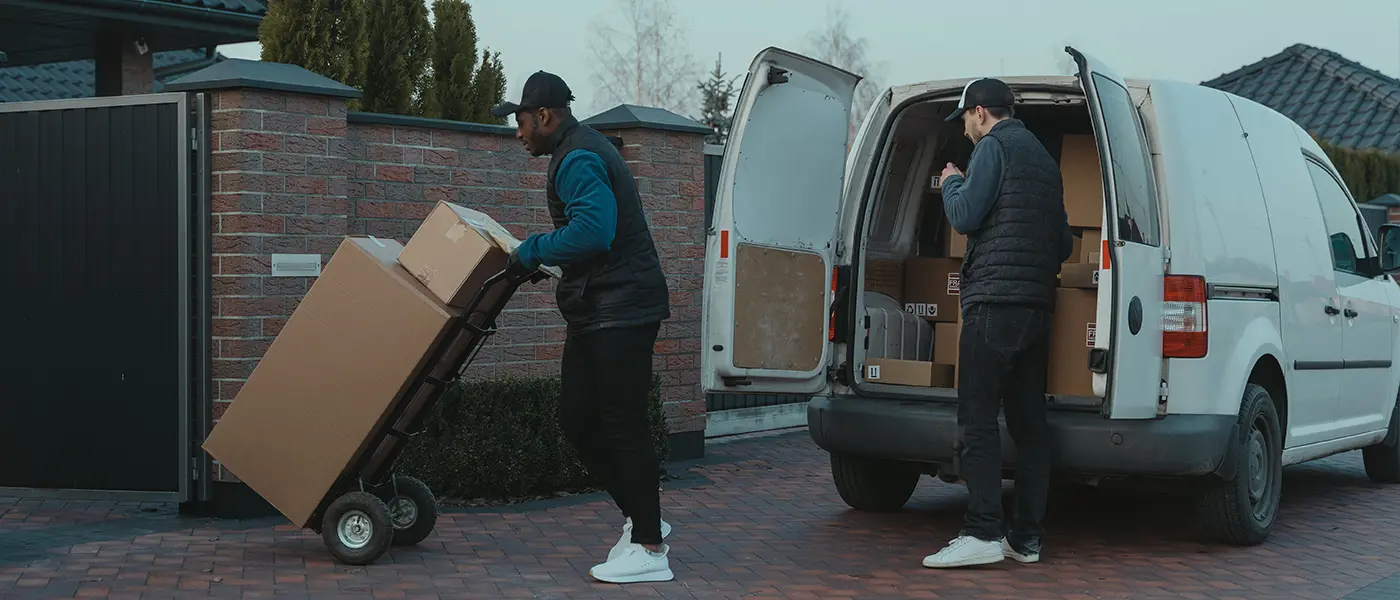Conquer Every Island, Every Shelf
As businesses open up to omni-channel selling, learn how to speed up, streamline, and satisfy customers by consolidating last mile and direct store delivery for your Philippine e-commerce business.
What is Last Mile Delivery?
In the Philippines’ e-commerce boom, promises of “two-day Shipping”, “next-day fulfillment” aren’t just marketing; they’re logistical aspects demanding perfect timing. But the spotlight often falls on the final aspect, ignoring the crucial behind-the-scenes work of last mile delivery. This final touchpoint, from distribution centers to customers’ doorsteps, is where Filipino enterprise owners must excel. But how? Let’s take a look.
Optimized mid-mile logistics, with smooth movement between warehouses and regional hubs ensure products arrive at distribution centers ready for the last-mile stage. For e-commerce business owners, an optimized mid mile ensures that their offline stores are stocked as well. This ensures that customers walk into their stores, offline and online to shop without having to face that dreaded “out-of-stock” notification.
Taking care of matters such as streamlining inbound logistics, efficiently receiving and processing your inventory, etc, lays the foundation for timely fulfillment promises.
By strategically placing warehouses, and implementing real-time tracking of both inventory levels and mid-mile throughout the entire journey, you transform your supply chain into a flawlessly executed service. This translates to satisfied customers across the nation, experiencing the thrill of next-day fulfillment and building brand loyalty.
Challenges of Last Mile Delivery in the Philippines
For enterprises in the Philippines, last mile delivery – the final leg of getting your products into customers’ hands – poses unique challenges. As an archipelagic country, delivering to over 7,000 islands means managing complex transportation routes and costs. Urban congestion, especially in metro Manila, slows delivery times. Remote barangays and rural areas also lack infrastructure, making delivery difficult. How can one solve this issue? This is how:
Optimising Logistics infrastructure: Optimizing routes, investing in tracking technology, digitizing processes, and partnering with logistics providers can significantly help. Switching to a distributed inventory model by splitting your inventory across multiple cuts down on the fulfillment timeline and helps you deliver orders faster.Experimenting with crowdsourced models is key for scalability across provinces.
Geographic diversity: For nationwide reach, solving the last mile is crucial for Philippine enterprises. It directly impacts customer experience and loyalty. By leveraging logistics technology, flexible delivery, and local partners with extensive coverage and geographical expertise, enterprises can overcome infrastructure and geographic hurdles. This unlocks growth potential and competitive edge through superior multichannel execution despite the challenges.
Strategies for Optimizing Last Mile Delivery
1. Local Logistics Expertise:
- Partnership: Partner with established 3PL providers who can connect you with top logistics providers who know the Philippines’ geography, customs, and local delivery nuances.
- Accure Regional Knowledge: Gain insights into specific challenges and customer preferences, ensuring smooth deliveries regardless of location
2. Seamless Mid-Mile for Faster Fulfillment
- Strategic Warehouse Placement: Position inventory closer to distribution centers and key delivery hubs for quicker last-mile journeys.
- One Handler for Logistics: By partnering with one provider to take care of logistics and last-mile, you have a consistent experience, without having to juggle between multiple processes and complicated handovers.
3. Integrated Systems for Business Continuity
- Tech-Powered Efficiency: Handle mid-mile and last mile order movement in one powerful order management system that syncs with your warehouse management system and your sales channels.
- Cloud-based Logistics: Integrate the best-in-class logistics management systems with your overall business operations for streamlined communication, transparency and data synchronization.
4. Flexible Delivery Options
- Offering Choices: Offer a range of delivery options like self-pickup, next-day, scheduled slots, and evening deliveries to cater to diverse customer preferences.
- COD Compatibility: Integrate cash-on-delivery options without sacrificing efficiency through secure cash handling and digital transaction integrations.
5. Real-Time Tracking & Communication
- Transparency: Invest in real-time tracking technology that empowers customers to follow their orders every step of the way.
- Proactive Communication: Utilize automated alerts and updates to address potential delays or delivery issues before they impact customers.
What is Direct Store Delivery And Its Benefits
Direct store delivery (DSD) is a supply chain method where manufacturers bypass distribution centers and deliver products directly to retail stores. This gives brands control over product flow from factory to shelf. DSD is highly relevant in the Philippines as e-commerce businesses are switching to a mixed model of sales that involve both online and offline stores.
DSD provides several key benefits for brands. These include:
- Cost reduction – Eliminating unnecessary touches and stock keeping units (SKUs) as items go straight to outlets avoids warehouse handling and storage expenses.
- Faster product availability – Goods reach stores faster since they are not flowing through multiple distribution points first.
- Improved inventory control – Brands gain omnichannel visibility and can replenish faster based on real-time outlet sales data. This integrates inventory views across online, retail, wholesale and other sales channels.
Moreover, direct store delivery lowers expenses, speeds up restocking, and gives brands enhanced control over product flow to trade partners. This empowers multichannel execution through cost efficiency, product availability, and integrated inventory management.
Considerations for Implementing DSD
Direct Store Delivery (DSD) promises lower costs and faster product flow, but before you jump in, take a look into these considerations. Here are some crucial considerations for Philippine enterprises making the DSD leap:
Product Compatibility: Not everything goes well with DSD. Analyze your product portfolio and prioritize those with high demand, ensure that SKUs with shorter shelf lives are prioritized first and dispatched to retail stores for faster consumption.
Operation Harmony: DSD demands a unified system– from sourcing to store shelves. Streamline your purchasing, warehouse management, and logistics systems to ensure seamless flow and accurate deliveries.
Network Reach & Tempo: Assess if your store distribution and capacity can handle frequent, direct deliveries. Consider regional variations in demand and ensure adequate infrastructure to cope with potential surges.
Communication Collaboration: DSD thrives on strong partnerships. Have one system in place to integrate your orders, inventory in warehouses and stock levels in your retail stores. Openly communicate with your stores about delivery schedules, inventory updates, and demand forecasting.
Cross Border Last Mile and DSD
For Philippine enterprises engaged in international e-commerce, cross border last mile delivery and direct store delivery (DSD) enable reaching customers globally. Efficient cross border final mile capabilities allow meeting customer expectations on cost and speed regardless of location. With a 3PL provider that has cross-border expertise and trade services, you can easily distribute your inventory across Southeast Asia to make sure that you can meet fulfillment timelines of your international customers.
DSD supplements last mile delivery by having brands deliver directly from a cross-border country-based distribution centers or manufacturing facilities to international retailer locations. This provides control over product flow and visibility into inventory levels at each overseas store. DSD improves cost efficiency, order accuracy, and speed versus relying on different distributors. This enables seamless logistics and fulfillment, considering it is carried out by the same provider.
For Philippine enterprises that are going global, owning cross border last mile and direct store delivery and international shipping unlocks several advantages. Export enterprises can improve customer experience, deepen retailer relationships, and accelerate launch to new markets.
How Locad Can Help Scale Your Philippine E-commerce Business
Partnering with Locad can help your Philippine enterprise function smoothly. Locad ensures that your products are fulfilled efficiently, be it mid-mile movement of inventory from your suppliers to our network of warehouses or moving shipments from our warehouses to your physical retail outlets. We coordinate logistics, warehouses, and order management effortlessly so that you can focus on giving shoppers an outstanding shopping experience. For your online sales channels like Shopee, Lazada, Shopify and TikTok, Locad connects you with top last-mile carrier providers in the Philippines to ensure you ship orders in time, per your online store delivery promises and delight customers in the Philippines and globally.
Conclusion
For retailers in the Philippines, mastering mid-mile and last-mile logistics and keeping inventory at optimum levels with direct store delivery is the key to providing a positive shopping experience.. Making use of data, forecasting and planning tools to optimize inventory, extend coverage through final mile fulfillment at affordable rates help businesses in the Philippines improve customer experience and loyalty.
Meanwhile, embracing direct store delivery puts control over product flow firmly in retailers’ hands. With oversight of in-store inventory and omnichannel visibility, Philippine retailers can reshape their supply chains around real-time demand insights and serve happy customers round the clock.





